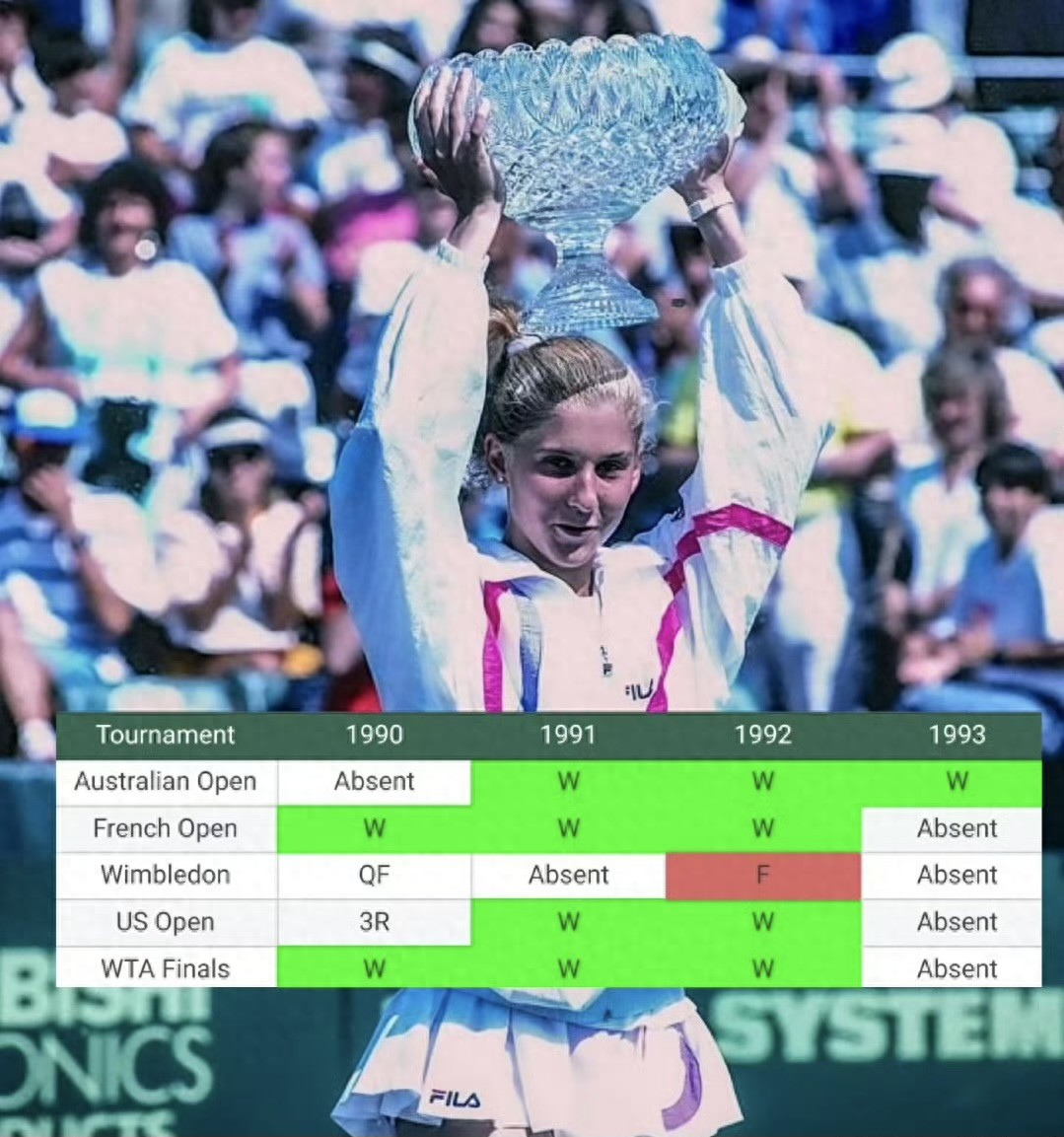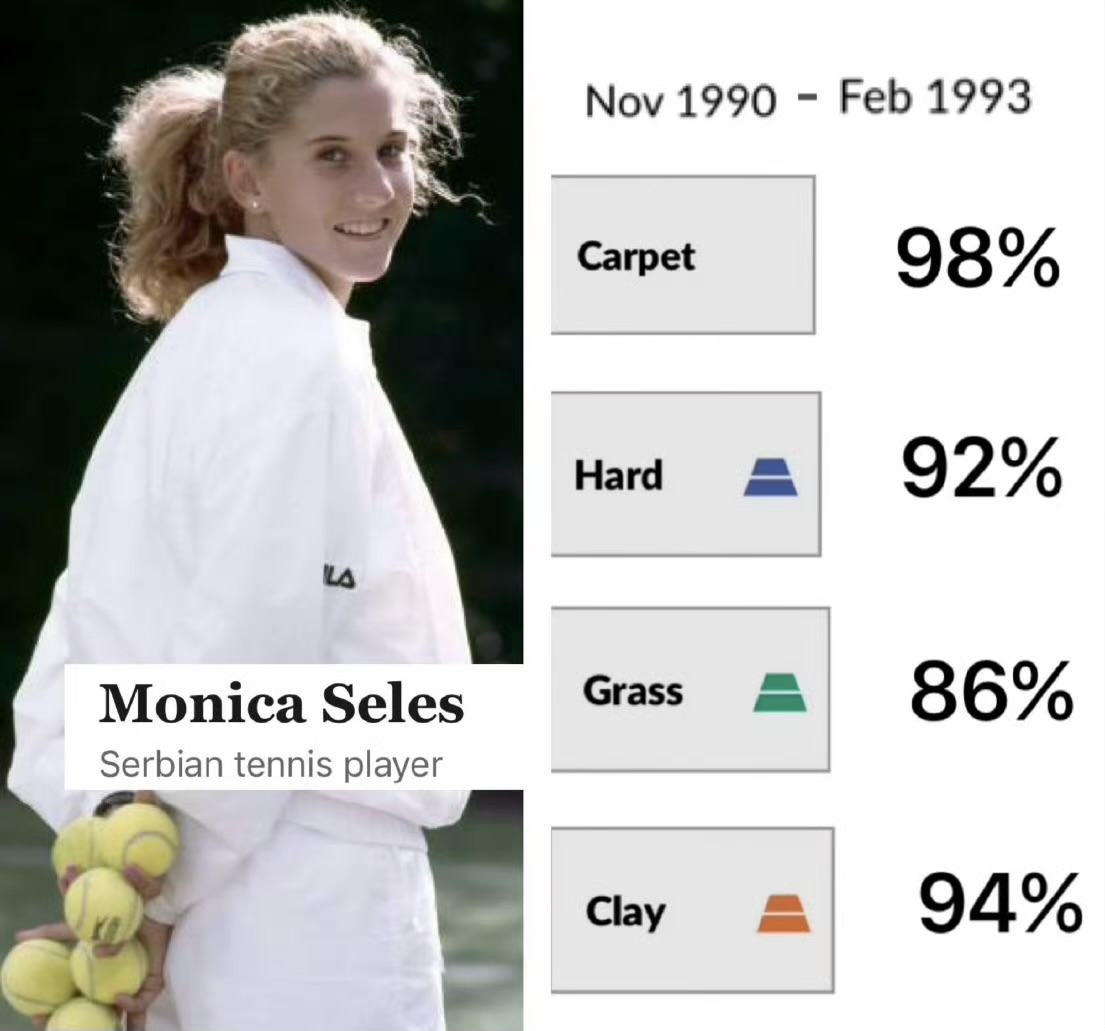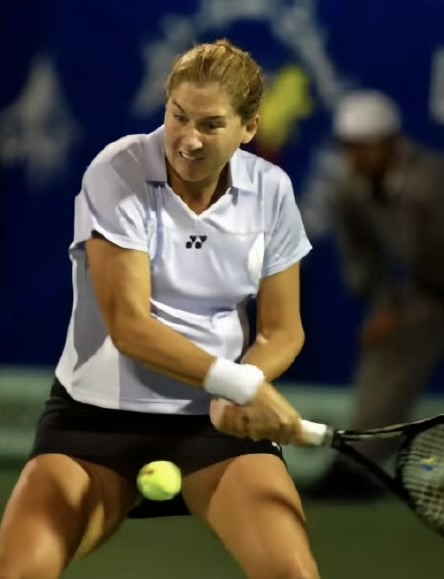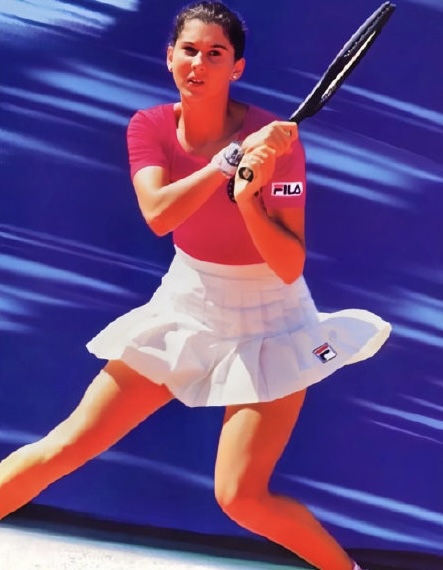Seles has once again faced a heavy blow from fate, announcing her diagnosis of myasthenia gravis.
The 51-year-old tennis star Seles recorded a video yesterday to announce her diagnosis of myasthenia gravis. "I see two balls when I play," Seles described her current struggle. This statement inadvertently became a brilliant metaphor for her entire life, where she has always faced two challenges at once: a visible opponent and an invisible fate. The once-dominant player known for her fierce forehand now faces the diagnosis of myasthenia gravis, demonstrating remarkable resilience. From venturing to America at the age of 13 to becoming world number one at 16, from the traumatic stabbing incident in Hamburg to her current battle with myasthenia gravis, Seles's life trajectory resembles an unending training session of volleys, with each blow of fate prompting her to find a new way to respond.

On April 30, 1993, a scream at the Hamburg court shattered the tranquility of the tennis world. At that time, the world number one Seles was stabbed in the back by a deranged fan of Graf. In that moment, it was not just an athlete's body that was injured, but a budding tennis heart at its peak that was forcibly interrupted. Seles later recalled, "I lost my love for tennis, that pure joy." This incident kept her away from the court for over two years, and when she returned, although she could still win Grand Slams, the unstoppable Seles had been forever changed. Sports historians often speculate: how many Grand Slams would Seles have won if not for that stabbing? 20? 25? This speculation itself highlights the unpredictability and cruelty of fate: life has no "what ifs," only responses.

Now, at 51, Seles faces a new opponent: myasthenia gravis. This autoimmune disease, which causes muscle weakness and fatigue, has made even daily tasks like fixing her hair difficult. "It has a significant impact on my daily life," Seles admitted. For an athlete who once dominated the tennis court with incredible speed and power, the loss of such physical ability is undoubtedly a deeply ironic second blow. However, Seles’s reaction is equally striking; she chooses to speak openly about her condition, collaborating with medical companies to assist other patients, and discussing the possibility of starting anew. This attitude evokes Nietzsche's famous quote: "That which does not kill me makes me stronger." Seles's life seems to perfectly embody this statement.

Seles's advice to young players, "As long as the tennis ball is bouncing, you must keep adjusting," transcends tennis itself, becoming a philosophy of life. From the language barriers she faced upon arriving in America at 13 to the pressures of early fame, from the trauma of the stabbing incident to the challenges of myasthenia gravis, Seles has consistently adapted. The psychological concept known as "resilience" is epitomized in her. Research shows that individuals with a growth mindset are better able to adapt to challenges and learn from adversity. Seles's ability to continually start over is a vivid example of this mindset.

In the dazzling galaxy of professional sports, Seles's story offers a different kind of brilliance—not merely measured by the number of trophies, but by the strength of character that stands tall amidst continuous blows. Her nine Grand Slam trophies are indeed impressive, but even more remarkable is her courage to move forward despite the potential loss of more trophies.

When Seles says, "This is what I'm doing now," she refers not only to battling illness but also to a continuation of a way of being. Life, like a tennis match, hinges on how we respond to the next ball rather than the gains or losses of the previous one. In this sense, Seles has long transcended the definition of a brilliant player, becoming a symbol of resilient humanity. Her story teaches us that while fate may dictate the force and angle of a serve, the way we respond is always in our own hands.

In the upcoming US Open, a new generation of players will showcase their talents at Arthur Ashe Stadium. Outside the court, however, Seles is engaged in a deeper match, not only for her health but also to demonstrate to all facing adversity how to "keep adjusting." This once-celebrated tennis prodigy is now teaching us how to face life's toughest serves. Her entire life has been a preparation for such moments, and even with weakened arms, she continues to swing her racket.(Source: Tennis Home, Author: Mei)







 Links
Links
 Contact
Contact
 App
App


